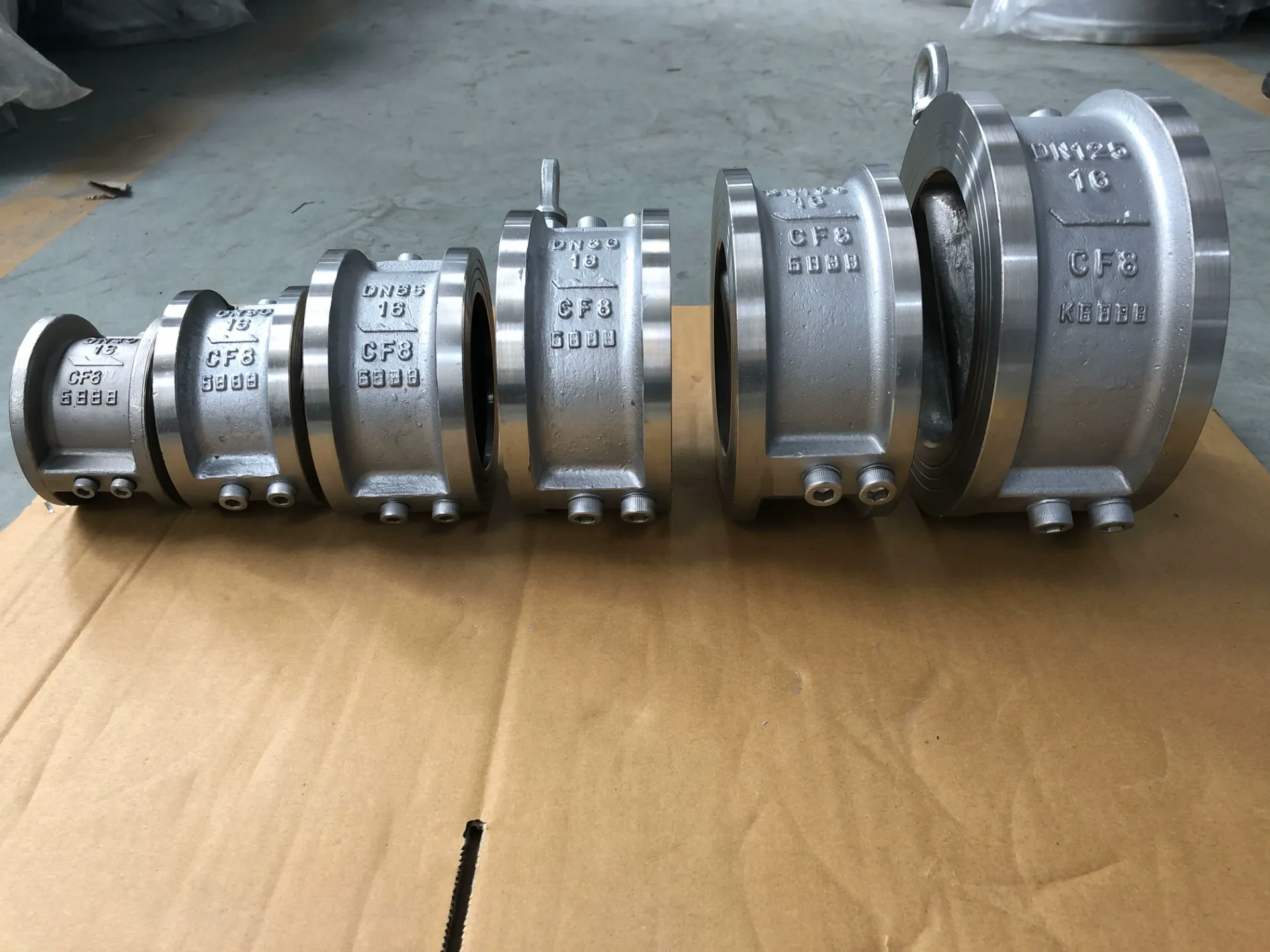Compact Powerhouse: Why the Wafer Type Butterfly Valve Is an Industry Favorite
When precision flow control meets tight spaces and demanding environments, the solution must be as compact as it is capable. That’s where the wafer type butterfly valve shines. Known for its lightweight body, simplified installation, and high-performance sealing, this valve is a staple across multiple industries—from pulp production to chemical manufacturing. Whether you're sourcing from trusted wafer type butterfly valve manufacturers or evaluating the wafer type butterfly valve price for a new system, it's clear that this valve has redefined efficiency and reliability.

Solving Internal Leakage in the Wafer Type Butterfly Valve
One of the most critical performance aspects of any butterfly valve is its ability to maintain a tight seal. However, under improper conditions or substandard installation, internal leakage can occur within the wafer type butterfly valve. This issue usually stems from three key factors: uneven torque during assembly, worn or damaged sealing elements, or improper alignment between the disc and seat.
To combat leakage, modern wafer type butterfly valve manufacturers have incorporated precision-engineered sealing technologies, including resilient elastomer seats and streamlined disc profiles. The valve’s compact build helps maintain uniform pressure across the sealing surface, reducing the chances of uneven wear.
Another frequent cause of internal leakage is corrosion or scaling on the disc surface, especially in aggressive media environments. To prevent this, many suppliers now offer coated discs or stainless steel options, which extend the valve’s life and keep the sealing area intact. Proper installation and regular maintenance are also crucial. Using calibrated tools to apply uniform torque and conducting periodic inspections can drastically reduce seal failure over time.
For facilities aiming to maximize service life while minimizing operational disruptions, choosing a reliable 4 wafer butterfly valve model with corrosion-resistant components and optimized sealing geometry can eliminate most leakage concerns before they arise.
Wafer Type Butterfly Valve:Precision and Durability in the Papermaking Industry
In the papermaking industry, consistent flow control and resistance to pulp fibers are essential. This is where the wafer type butterfly valve proves its worth. Positioned between flanges with minimal face-to-face dimensions, these valves require little space while offering full-bore flow, a critical feature when dealing with pulp mixtures and paper stock slurries.
Thanks to its unobstructed design, the wafer type butterfly valve avoids common clogging issues associated with traditional gate or globe valves. The central disc rotates smoothly, ensuring that fiber-rich materials pass through without build-up or pressure drops. Many paper mills specifically select 4 wafer butterfly valve configurations for pipelines where space-saving and cost-effective control are vital.
Another advantage in papermaking is the valve’s low torque requirement, which allows for simple manual operation or low-cost actuation. In energy-conscious facilities, this translates to reduced energy consumption, easier automation, and less wear on control systems.
Some wafer type butterfly valve manufacturers even customize their valves with abrasion-resistant coatings or chemically resistant materials to withstand bleaching agents and pH-variable pulp flows, ensuring long-term operational security.
Wafer Type Butterfly Valve:Unmatched Performance in Chemical Applications
In chemical processing, where corrosive media, temperature swings, and volatile fluids are common, durability and safety take precedence. The wafer type butterfly valve is increasingly selected for its resistance to chemical attack and dependable shutoff capability.
Because of its compact design and sealed components, the valve prevents leakage of hazardous materials—a must-have in chemical plants where even minor leaks can result in dangerous consequences. Modern wafer type butterfly valve manufacturers offer variations with PTFE-coated discs, Viton seats, and full stainless steel builds to meet the strictest material compatibility requirements.
The low-maintenance design of the wafer type butterfly valve also reduces the risk of mechanical failure and minimizes the need for operator intervention. This reliability is essential in continuous processing lines where uptime directly affects profitability.
Furthermore, the valve's low cost relative to ball or plug valves makes the wafer type butterfly valve price extremely attractive for chemical facilities needing hundreds of control points across a large plant.
The Competitive Edge of the 4 Wafer Butterfly Valve
For projects that demand precision without excess bulk, the 4 wafer butterfly valve offers just the right size and strength combination. This standard dimension is often selected for mid-sized industrial pipelines, offering optimized flow capacity and compatibility with common pipe diameters.
A key advantage of the 4 wafer butterfly valve is its installation efficiency. With no need for special flange adapters or bulky bodies, it fits neatly between standard ANSI or DIN flanges using only a few bolts—minimizing downtime and reducing manpower requirements.
From small-scale operations to expansive factory installations, the wafer type butterfly valve fits seamlessly into both new construction and retrofit applications. Its space-saving profile, high availability, and scalable pricing make it a first-choice valve for engineers looking to balance performance with cost.
Wafer Type Butterfly Valve FAQs
What causes internal leakage in the wafer type butterfly valve?
Internal leakage typically results from misalignment, seal wear, or uneven bolt torque. Choosing high-quality wafer type butterfly valve manufacturers and ensuring proper installation can eliminate most of these issues.
How is the wafer type butterfly valve used in papermaking?
It is used to control slurry and pulp flows due to its clog-resistant disc design and full-bore opening, making it ideal for fibrous materials in limited-space piping systems.
Why is the wafer type butterfly valve suitable for the chemical industry?
Its corrosion-resistant materials, reliable sealing, and low-maintenance design make it ideal for handling aggressive or hazardous chemicals safely and efficiently.
What is the advantage of a 4 wafer butterfly valve?
The 4 wafer butterfly valve offers a standard mid-size solution with easy installation, good flow characteristics, and wide compatibility with industrial pipe flanges.
How does wafer type butterfly valve price compare to other valves?
It is generally more affordable than ball or plug valves while still offering excellent sealing and durability, making it a cost-effective choice for many industries.
-
3-types-of-check-valves-maintenance-tipsNuusAug.23,2025
-
ball-valves-types-with-trunnion-mounted-designNuusAug.23,2025
-
butterfly-valve-company-production-capabilitiesNuusAug.23,2025
-
fisher-globe-valve-technical-specificationsNuusAug.23,2025
-
types-of-gaskets-for-flanges-selection-guideNuusAug.23,2025
-
wedge-gate-valve-suppliers-quality-standardsNuusAug.23,2025
-
Breakthrough in Domestic Low Temperature Valve Technology in ChinaNuusAug.18,2025




